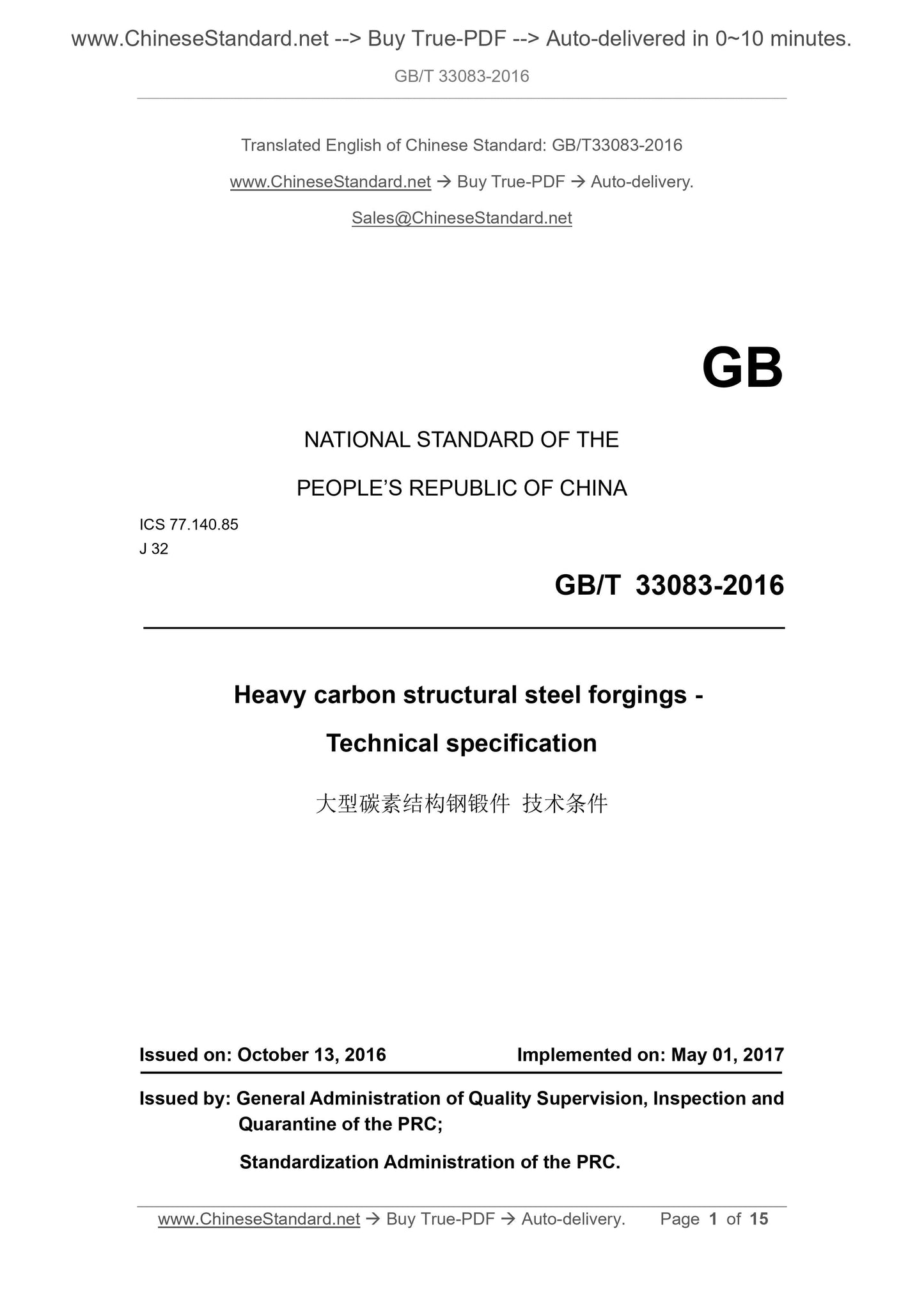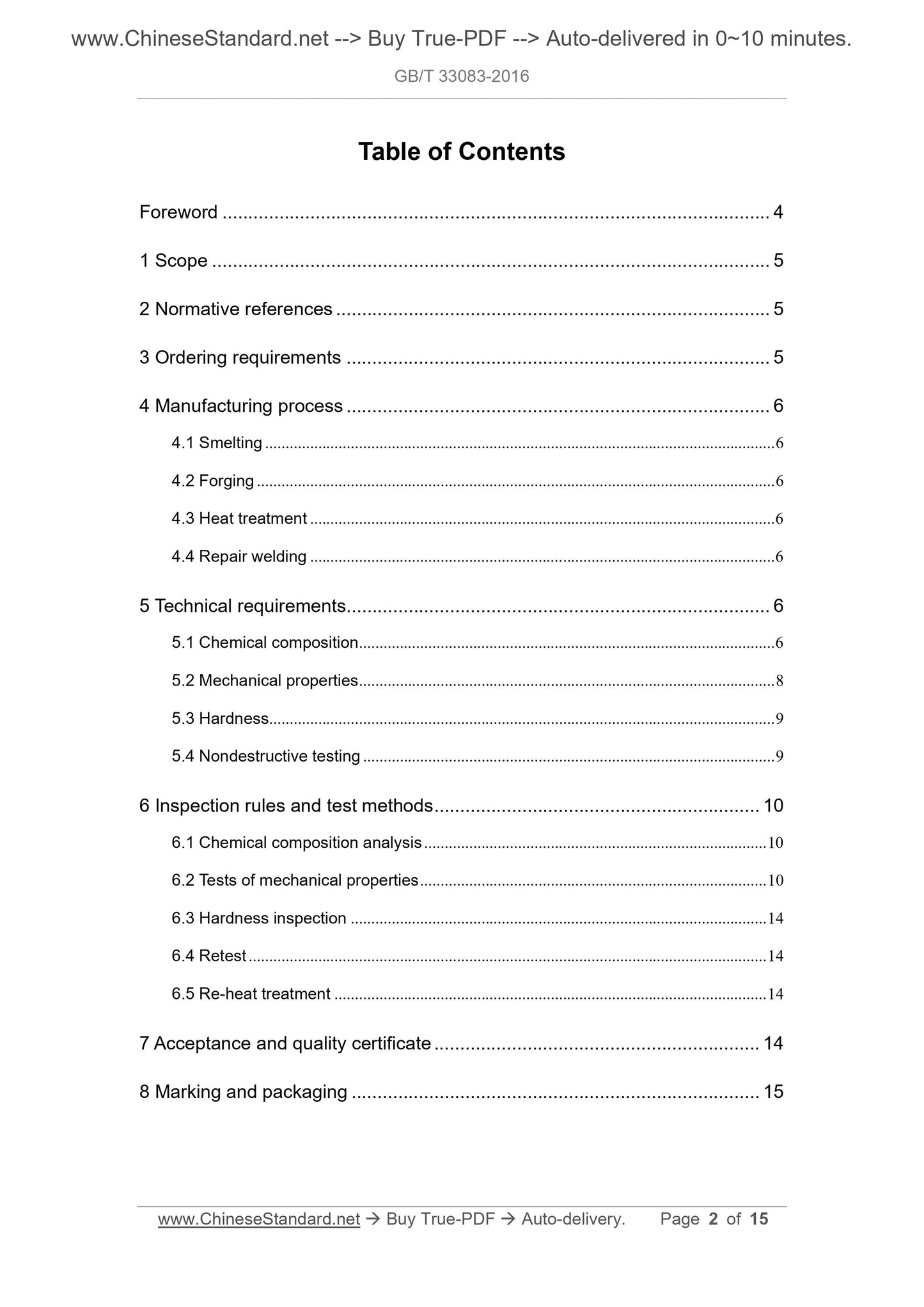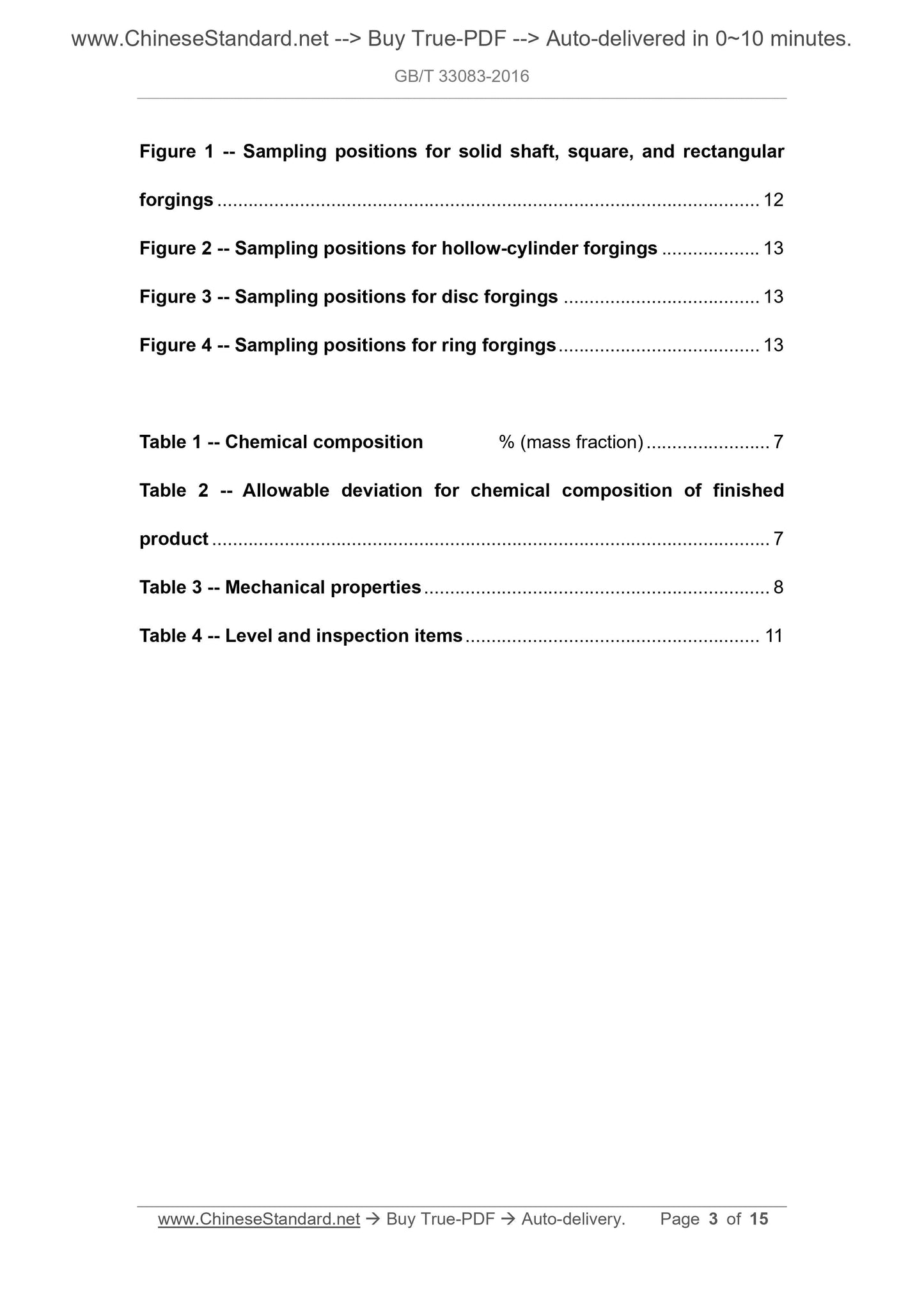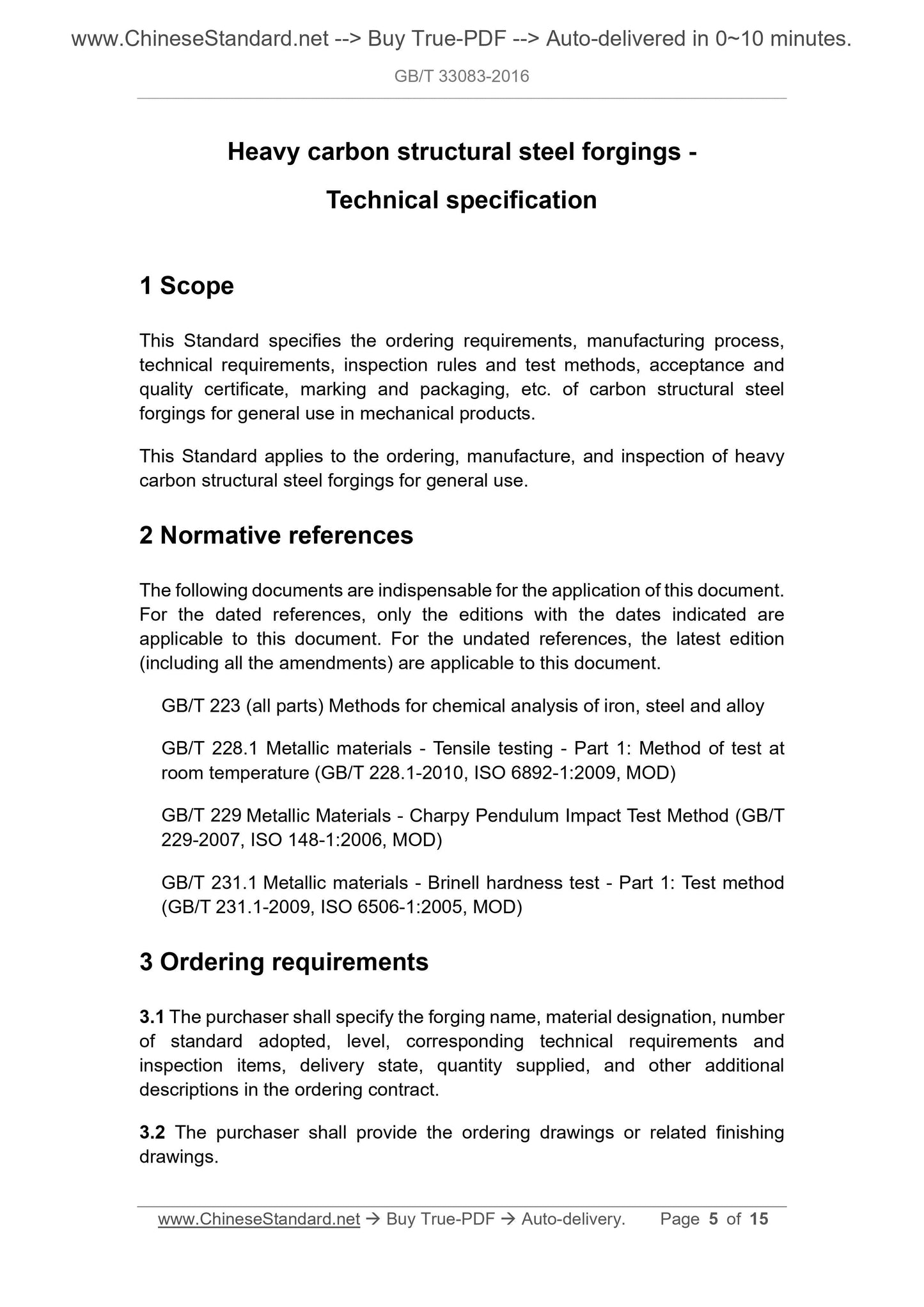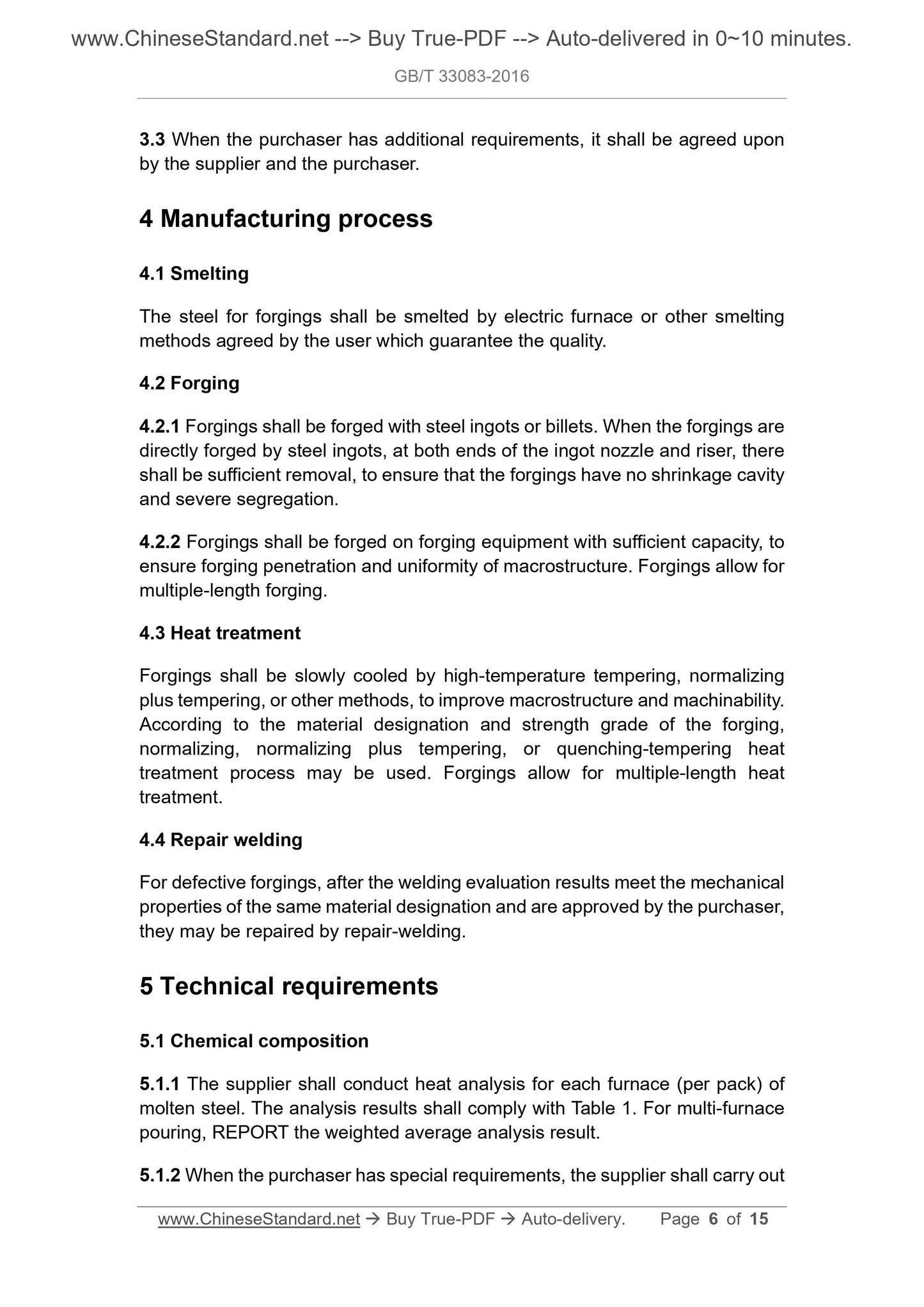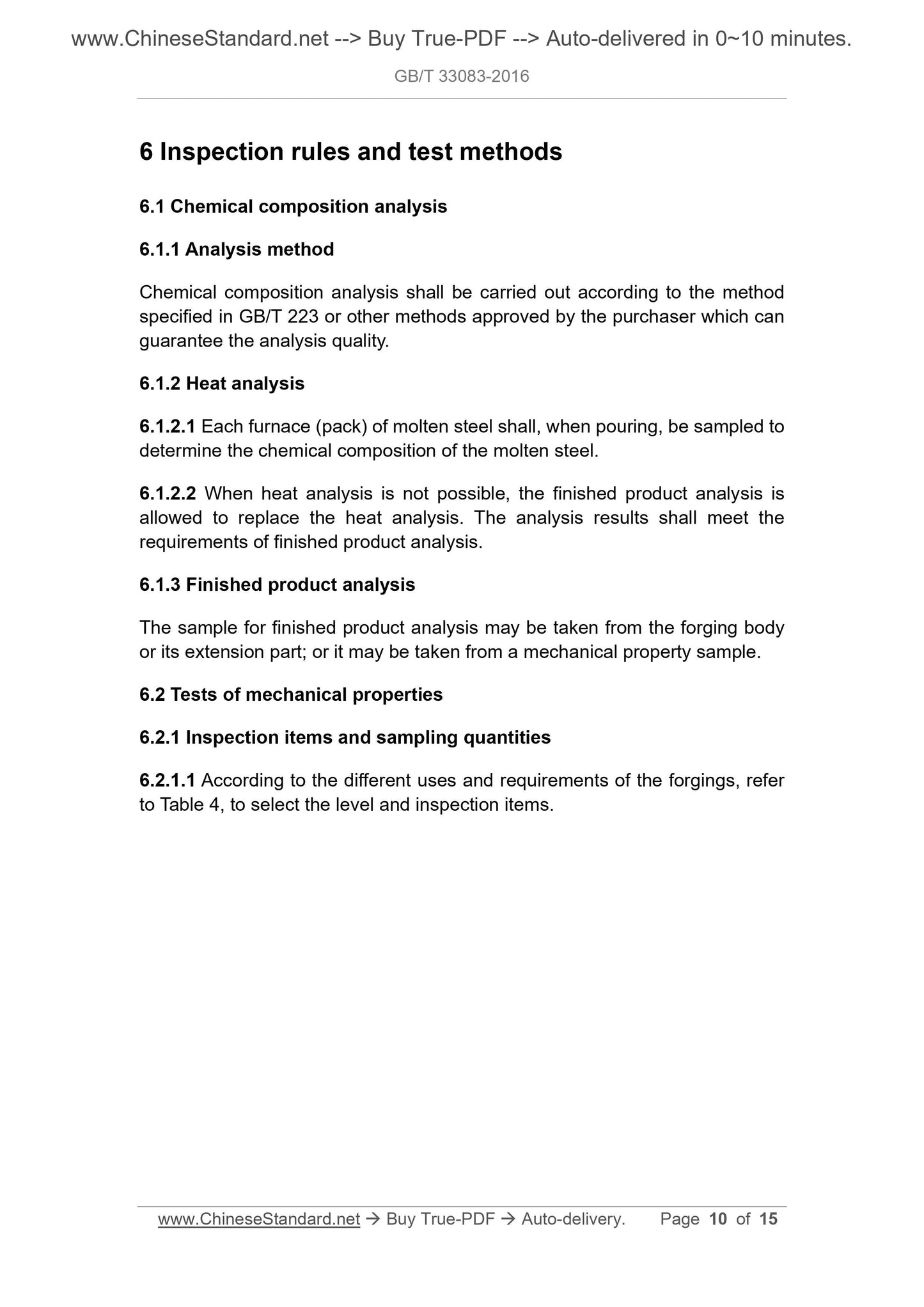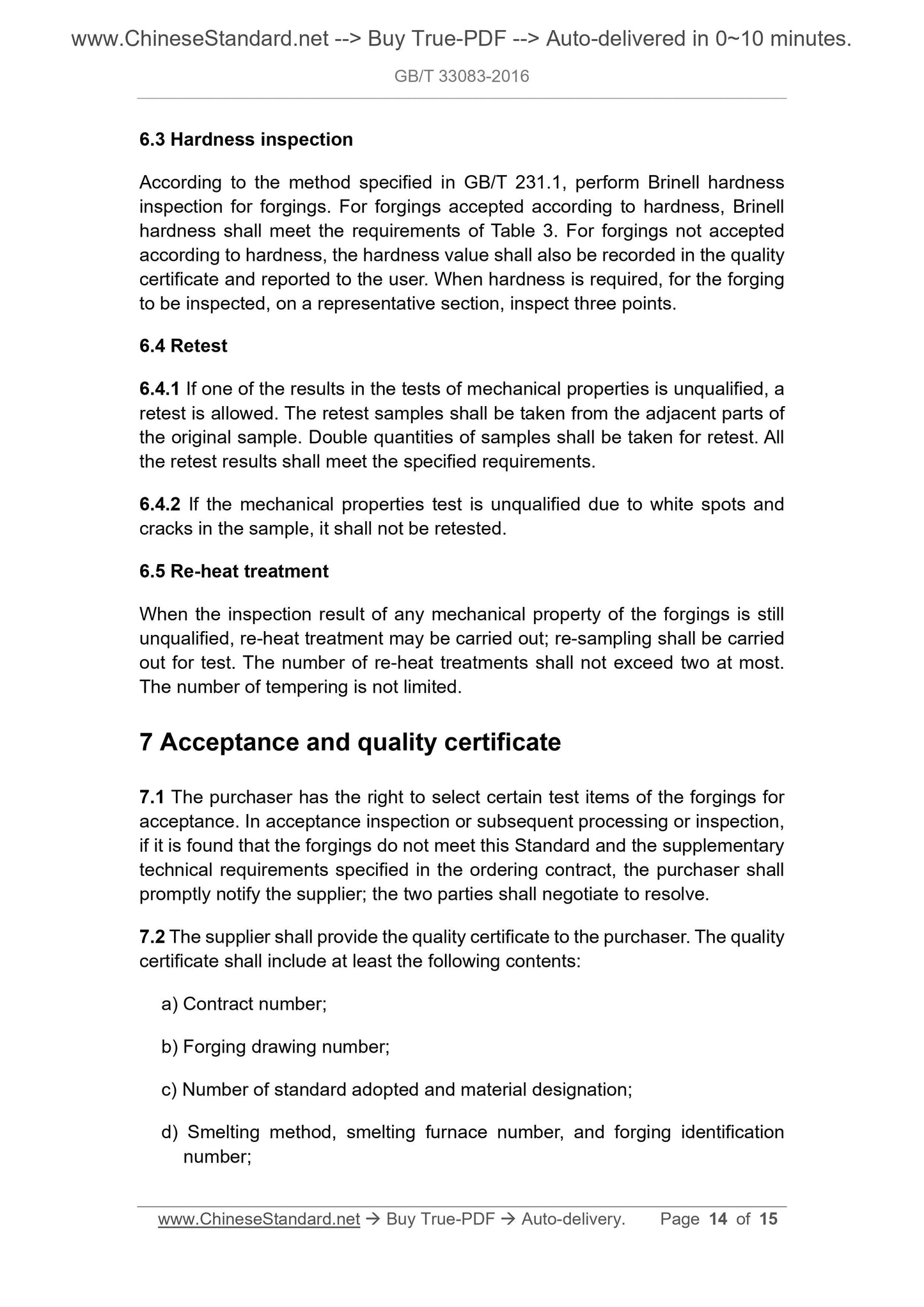1
/
of
7
www.ChineseStandard.us -- Field Test Asia Pte. Ltd.
GB/T 33083-2016 English PDF (GB/T33083-2016)
GB/T 33083-2016 English PDF (GB/T33083-2016)
Regular price
$150.00
Regular price
Sale price
$150.00
Unit price
/
per
Shipping calculated at checkout.
Couldn't load pickup availability
GB/T 33083-2016: Heavy carbon structural steel forgings - Technical specification
Delivery: 9 seconds. Download (and Email) true-PDF + Invoice.Get Quotation: Click GB/T 33083-2016 (Self-service in 1-minute)
Newer / historical versions: GB/T 33083-2016
Preview True-PDF
Scope
This Standard specifies the ordering requirements, manufacturing process,technical requirements, inspection rules and test methods, acceptance and
quality certificate, marking and packaging, etc. of carbon structural steel
forgings for general use in mechanical products.
This Standard applies to the ordering, manufacture, and inspection of heavy
carbon structural steel forgings for general use.
Basic Data
| Standard ID | GB/T 33083-2016 (GB/T33083-2016) |
| Description (Translated English) | Heavy carbon structural steel forgings - Technical specification |
| Sector / Industry | National Standard (Recommended) |
| Classification of Chinese Standard | J32 |
| Classification of International Standard | 77.140.85 |
| Word Count Estimation | 14,125 |
| Date of Issue | 2016-10-13 |
| Date of Implementation | 2017-05-01 |
| Regulation (derived from) | National Standard Notice No.1716 of 2016 |
| Issuing agency(ies) | General Administration of Quality Supervision, Inspection and Quarantine of the People's Republic of China, Standardization Administration of the People's Republic of China |
Share
